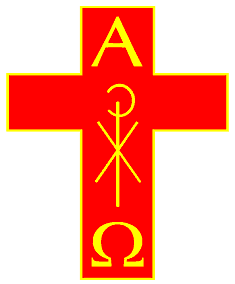
Supplying customers throughout the UK and Worldwide...
See us on Facebook
Like and Subscribe on YouTube
SCP members click here

+44 (0) 1670 362647
Report a bug here
Suppliers of church furnishings, consumables, garments and much more...
Changes to sending goods to USA due to recent tariff announcements - August 2025, see here

Italia Range Pontifical Buskins
Buskins are essentially a liturgical form of "stocking" that is worn over the foot and up to the base of the knee where it is tied on with ribbons. This action is done in the course of the pontifical vesting rites. They are more commonly described as ceremonial stockings of silk, sometimes interwoven with gold threads, and even heavily embroidered, worn by the celebrant of a pontifical Mass. Originally worn by priests, they were reserved about the eighth century for the exclusive use of bishops, a privilege recently extended to lesser prelates. In colour they correspond to the chasuble but are never worn with black.
Liturgical stockings, or buskins, are prescribed by the Rubrics and the Ceremonial of Bishops for the celebration of Pontifical Mass. They differ from ordinary stockings [this reference to 'ordinary stockings' comes with reference to what would today be commonly called "socks" -- LAJ], because they have preserved the antique form of stockings previous to the invention of knitting.
They are made of silk material, not knitted, but woven and tailored, and their colour is the one required by the office of the day, white, red, green, or purple. Such stockings are not used at Requiem Mass.
All who, by virtue of their Orders, or by special privilege, are entitled to celebrate Pontifical Mass, wear these stockings. Those of the Pope and Cardinals may be embroidered with gold. Those of Archbishops, Bishops, Protonotaries Apostolic di numero and supernumerary, are made of plain silk and bordered with a gold strip. Those of the Protonotaries ad instar, of Abbots, Canons, etc., may be trimmed with a strip of yellow silk only.
The Prelate, while vesting for Pontifical Mass, puts on these buskins over his ordinary stockings or socks, and has them fastened to his leg with a silk ribbon sliding through loops at the top of the buskin; and, when the Prelate wears long trousers, as is the custom in this country [USA], the lower part of the trousers should be folded so as to fit inside the legs of the buskin, thus avoiding the unsightly appearance of the pontifical sandals partly covered by the black trousers.
Cardinals, Prelates invested with the episcopal character, Abbots and the seven Protonotaries postolic di numero, put on the liturgical stockings at the throne or at the faldstool,
while reciting the prayer " Calcea, Domine, pedes meos... "
Other Protonotaries, Canons and all ecclesiastics who may have received the privilege of celebrating Pontifical Mass, are not permitted to put on their liturgical stockings at the
faldstool, but only in the sacristy.
We offer you below a range of Buskins, made in Rome and available with a lead time of circa 2 weeks.

Prodotti di Calze pontificali



Italia Range Buskins - IT-BUSK-01
Italia Range Pontifical Buskins (Stockings) 100% fine silk interwoven with golden silk threads. Handmade in Rome by artisans and available to order. Available also in hand and machine woven Lamé fabrics.
Colours available: Crimson Red, Scarlet Red, Purple & White.
Made in Italy and to order with a leadtime of circa 2 weeks
We offer 3 fabric options for the Buskins and these are explained below:
Hand woven Lamé: This is a type of fabric, hand woven or knit with thin ribbons of metallic fiber, as opposed to guipé, where the ribbons are wrapped around a fibre yarn. It is usually gold or silver in color; sometimes copper lamé is seen. Lamé comes in different varieties, depending on the composition of the other threads in the fabric
Machine woven Lamé: This is a type of fabric, machine woven or knit with thin ribbons of metallic fiber, as opposed to guipé, where the ribbons are wrapped around a fibre yarn. It is usually gold or silver in color; sometimes copper lamé is seen. Lamé comes in different varieties, depending on the composition of the other threads in the fabric
100% Plain Silk: Silk is a natural protein fiber, some forms of which can be woven into textiles. The protein fiber of silk is composed mainly of fibroin and is produced by certain insect larvae to form cocoons. The best-known silk is obtained from the cocoons of the larvae of the mulberry silkworm Bombyx mori reared in captivity



